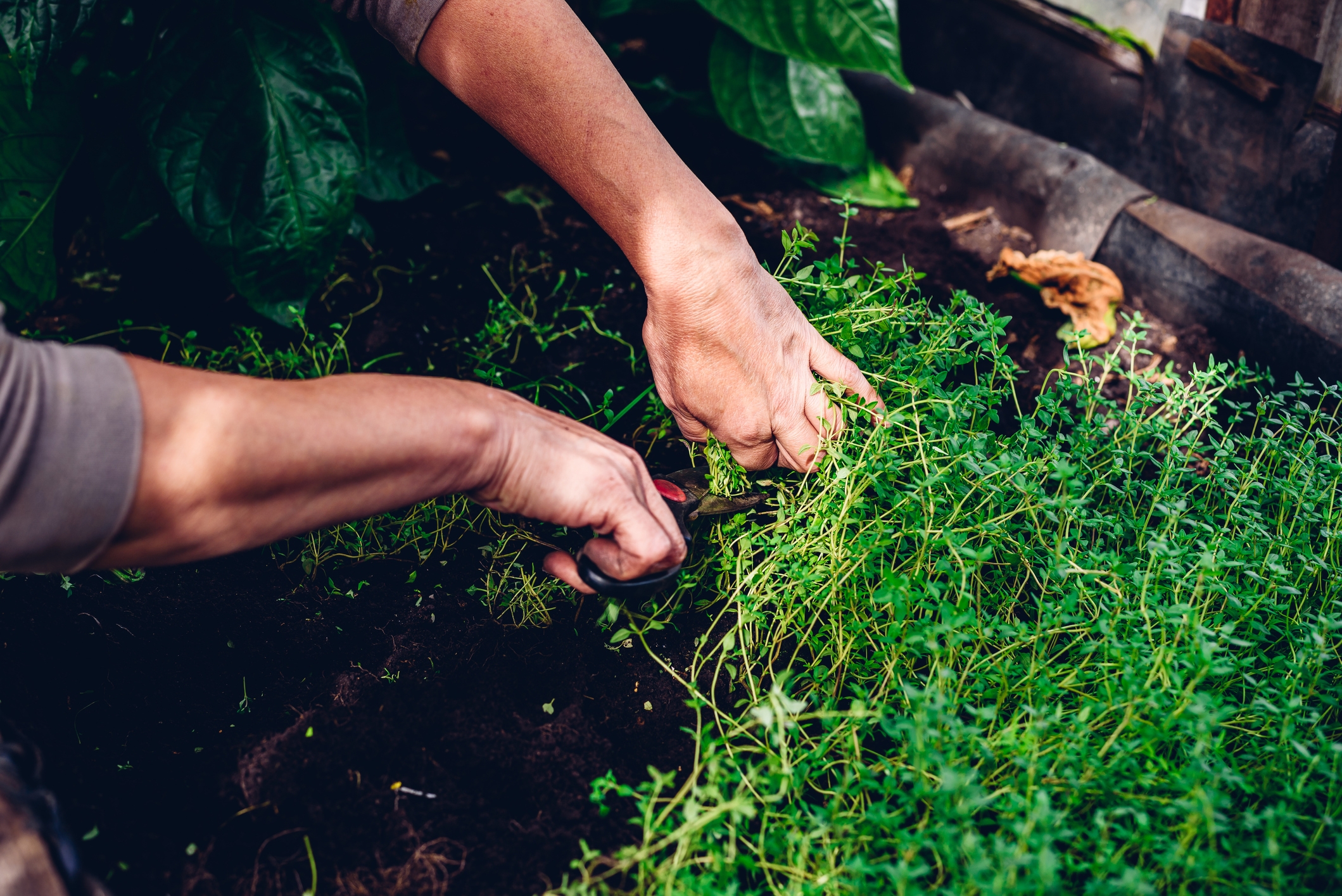Thyme
Thyme, a beloved herb known for its pungent aroma and versatile culinary applications, belongs to the mint family. With tiny, fragrant leaves, it graces kitchens and gardens worldwide. In Alberta, amidst a growing culinary renaissance and a strong focus on locally sourced ingredients, thyme has found its niche, both in modern dishes and traditional recipes.

More on Thyme
About
Thyme plants are low-growing, with woody stems and small, green-grey leaves. They flourish in sunny conditions and well-draining soil. Thyme's unmistakable aroma is resinous and earthy, with subtle hints of mint and clove. Several varieties exist, with subtle differences in scent and flavour. While not native to Alberta, thyme thrives in local gardens and greenhouses, and its popularity in Albertan cuisine continues to soar.
History
Thyme's roots trace back to ancient civilizations, including the Egyptians and Romans, who used it for various culinary, medicinal, and even ceremonial purposes. Its journey in Alberta, like many culinary herbs, is intricately tied to the waves of immigration and the establishment of agricultural practices in the region. Over time, as Alberta's agricultural sector expanded and diversified, the emphasis on homegrown herbs, including thyme, increased. Today, it's celebrated in both urban gardens and commercial farms across the province.
Ways To Cook
Thyme's culinary versatility is truly impressive. It pairs beautifully with a myriad of ingredients, from meats and poultry to vegetables and grains. In Alberta, where beef is king, thyme often finds its way into stews, roasts, and grills, accentuating the meat's rich flavour. It's also a staple in many traditional soups and broths. For a touch of Albertan flair, chefs might use thyme in tandem with local ingredients like wild mushrooms, game meats, or root vegetables. The herb also shines in infused oils, vinegars, and even desserts. Drying thyme concentrates its flavour, making it a year-round staple in Albertan kitchens, encapsulating the province's agricultural spirit in each aromatic sprinkle.
